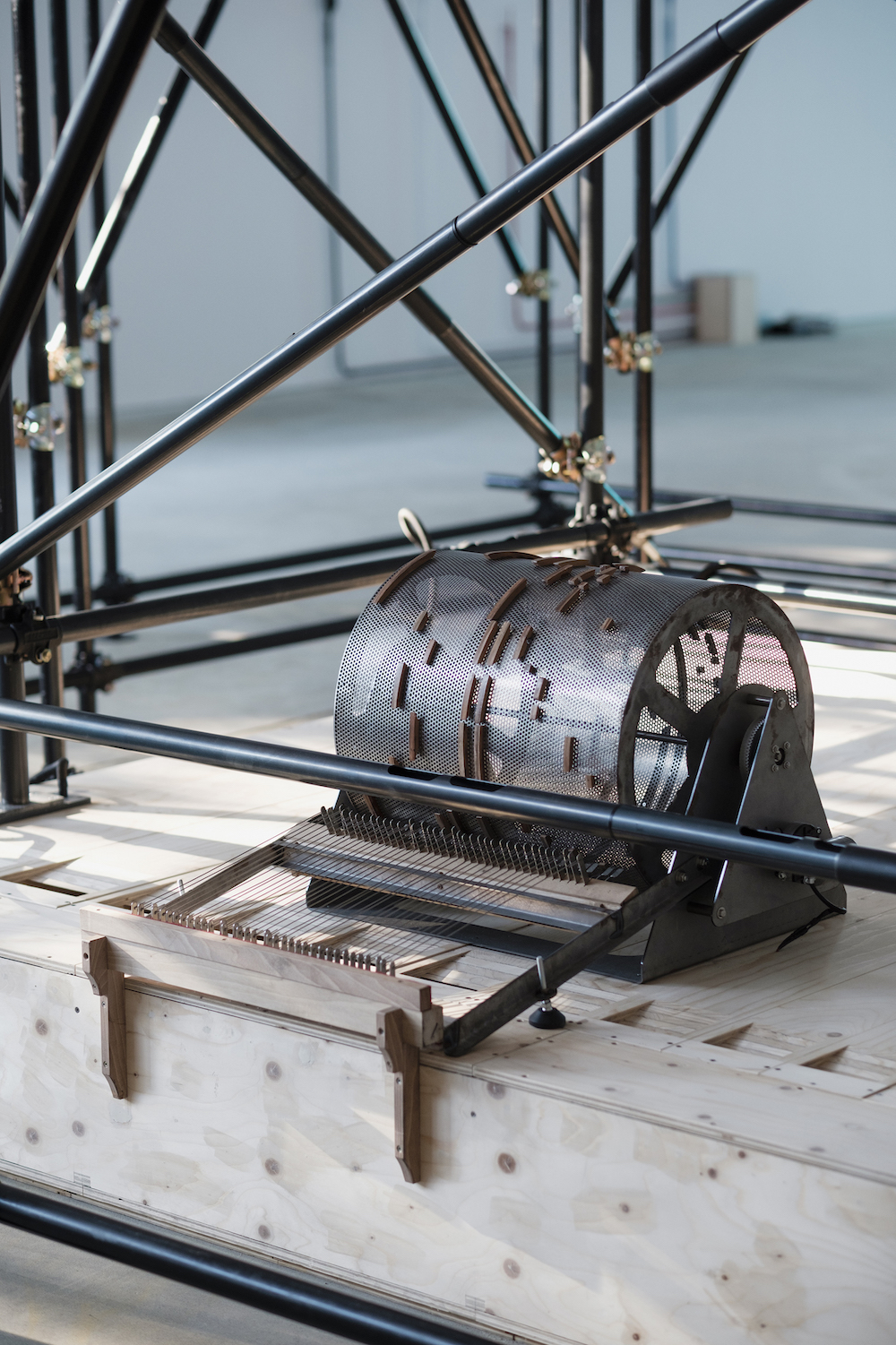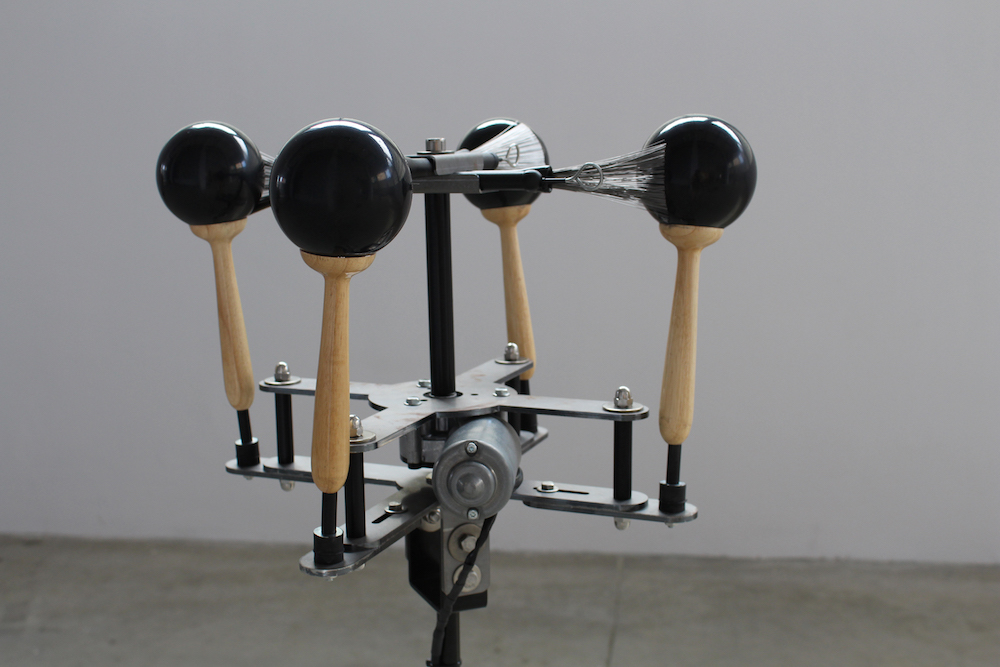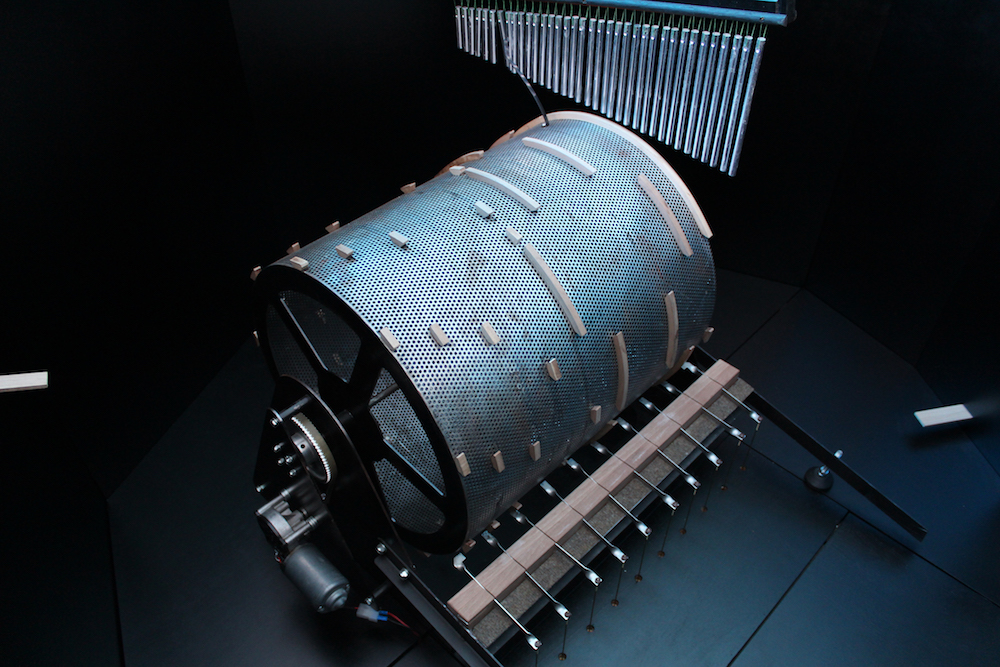
Can you tell me a little about Four Organs?
Four Organs takes its name from a famous 1970 piece of music by Steve Reich. This exhibition also deals with a quartet of organs with maracas. Three of the four organs were exhibited in the past while one of the organs and the maracas work were made for the show. However, the three existing organs have undergone a variation that has incorporated them more firmly into the exhibition space.
This show reinterprets the space of the Fondazione Merz. How closely have you been working in the space for the installation? And when a piece is created with a specific place in mind do you feel it can be translated elsewhere?
The space of the Fondazione is fundamental; we studied its resonance and light, and I have deployed and reinstalled the works to function with these aspects. The space works like a sound box that unites and delivers sounds in a very special way. In practice, moving around in the space allows one to sense certain passages, certain resonances and certain harmonics, more or less, as the music changes depending on where you are. One could say that no one in the space is listening to the same music. To answer the second part of your question, I think that a work intended for a particular site can indeed be reinstalled elsewhere and if done well it will always bear with it an imprint of the first site where it was installed. Years ago–twenty to be exact–I made a sculpture which, every time it was moved, took with it a reproduction of a part of the floor of the site where it was previously installed, accumulating layers of flooring and growing in height thanks to this perpetually increasing base. I would say that this is a figure that well represents the concept of the birthplace of a work.

What was your process for choosing, or creating, the organs included in the show?
The organs often have a literary beginning, poems–works such as Otra Fiesta and Voyelles–or pieces of music, as was the case for In a Landscape and Three Quarter-Tone Pieces. There are also words and phrases used when I plan to combine scaffolding with organ pipes, such as two verticals, one solid, the other airy. Or, as with In a landscape, you have to look into and listen to a well, and you understand that the landscape is nothing other than the mechanism that produces the sound.
Voyelles is based on the famous Rimbaud poem that gives a colour to the vowels that are reproduced in the work by five organ pipes in the Vox Humana register, a famous organ register in which the organ player competes with the Creator in inventing the human voice. Three Quarter-Tone Pieces refers to a biographical event in the life of Charles Ives, who wrote a piece for two pianos tuned three-quarters of a tone apart from each other. In my family, all music lovers, the penalty for a game (of which I do not remember the name) was to compose or listen to a piece with a three-quarter tone. Hence, the familiar and domestic aspect of the organs presented. One can begin only with the poetry, that magical abbreviation of speech that has an impeccable accuracy.

It has been mentioned that your Three Quarter-Tone Pieces could drive a listener “to meditation or flight”. How do you respond personally to the sound?
The organ was invented for this, to inspire devotion to relate to and feel what you do not see. Each of the four organs acts differently, at least for me. In a Landscape is moving, although the emotion is perhaps called into question on seeing the mechanism revealed. Otra Fiesta only refers to solitude without redemption from the listener. Three Quarter-Tone Pieces physically moves and shakes the body, compresses the organs and thoughts. The Voyelles, for me, is like an alarm clock, a bell, the arrival of something that interrupts the development of a resonance.

The outside work, Starless visualizes sound to some degree. What led you to include this aspect in the show?
Starless is like an appendix to the show that remains focused on the four organs. Starless materializes the paradox that is the visualization of a music that you cannot hear. It takes the concept of synesthesia, or music versus image, to the extreme. That is present throughout the exhibition, leaving only the image as music. This is evident in Rimbaud’s Voyelles and in the blue of the B-flat, [according to Russian composer Alexander Scriabin], on the windows behind In a Landscape. There is no scientific evidence for it, but music is indeed coloured.
‘Four Organs’ runs until 1 October at Fondazione Merz, Turin. fondazionemerz.org





